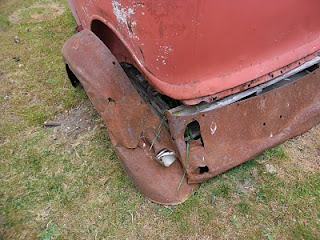http://www.youtube.com/watch?v=i00j6lJgRLs
This next link shows how a carburetor works. Its for an aircraft but works the same on a car. Sorry about the singing intro but it is a very good explanation.
http://www.youtube.com/watch?v=9BYm0HnLGRU
Now because I am using the Lexus V8 which is of course fuel injected, I am going to need something a little more elaborate when it comes to the fuel tank and the fuel pump. This is because if I had a carburetored engine, a carb doesn't need a lot of fuel pressure, just enough to get fuel from the tank to the carburetor which has its own little reserve tanks of fuel up at the engine (the float chamber). The engine then basically sucks the fuel in that it needs. Another point to note is that if your fuel tank is nearing empty and you go round a sharp corner and the pump sucks a big gulp of air, it doesn't matter as the carb still has its own small supply of fuel it can use while it waits for the pump to send more fuel along.
With an EFI engine though the fuel is sent straight to the injectors and they need a constant supply of high pressure fuel. This means you need a high pressure pump and it also means you can't ever have the pump sucking air. If it did you would get a big gulp of air at the injectors and no petrol would go into the engine so the engine would cut out. To avoid this in EFI cars they have a surge tank which ensures the fuel pump always has a supply of fuel around its intake tube, even when you are going round corners.
So for me with my build it means I can still use an old style 1934 Ford tank but I will need to put a hi pressure pump into it and I'll have to install a surge tank for it to sit in.
To achieve this I have today been in and bought a fuel tank from a turbo charged Toyota Celica GT4. The pump in this tank will deliver enough fuel volume to the engine. Also the tank will have a surge tank in the bottom of it. I'll just need to cut these components out and install them into a tank that suits the 34 Chassis both in terms of install and perhaps not quite so ugly as this one.
Anyway, here's the tank I purchased today.


There are three circular plates on top of the tank. The top one is the breather pipe that allows the tank to breath as the pressure changes inside the tank depending on the temperature. Obviously on a hot day the fuel and air in the tank expands and that needs to go somewhere, hence a breather.
The second plate to the right is the fuel level sender unit. This is basically a float on an arm that operates an electronic rheostat that varies the signal (amount of current) being sent to the fuel gauge you read on your dashboard. As the arm goes up, more current goes to your gauge and the needle goes up to full. As the tank drains the float drops down and more resistance is applied in the rheostat so less current is sent to your fuel gauge and the needle on the gauge drops closer to empty. We'll look at the float inside the tank in a picture below.
Lastly the big plate has the pump under it and the pipe that carries the fuel from the pump to the engine is coming out of it on the right. The other pipe to the left is the return pipe, this returns fuel that was unused by the injectors. This allows the fuel circuit to run a constant pressure regardless of how much the injectors are or aren't using. Any surplus fuel comes back to the tank to be picked up by the pump once again.
Lets have a look inside.

This is the pump (laying on its side). The pump itself is the cylinder to the left in the photo. It sucks fuel through the nylon "sock" that is at the top left of the picture (the squarish white thing). You can see the fuel pipe coming out of the pump and going up through the mounting plate we looked at from the outside in the last picture.
Also you can see the return pipe coming back into the tank. It has an open end with a "hockey stick" bend at the end.

Last but not least here is a view inside the tank looking into the surge tank. That's the white plastic bin. In effect this is always full of fuel and ensures the pump doesn't suck air even when going round corners or braking heavily, so the injectors have a constant supply of fuel.
Also to the right of the surge tank in this pic you can just make out a black cylinder lying on its side in the fuel. This is the float for the fuel level sender and it moves up and down and in turn raises and lowers the arm attached to it. This then operates the rheostat I mentioned earlier to vary the current that goes to the fuel gauge. The rheostat is inside the cream coloured plastic box to the top right of the photo.
So there you have it the reason I needed an EFI tank and pump and the basics of fuel injection explained.
I think I'll go and have a cup of tea and a lie down now.




















